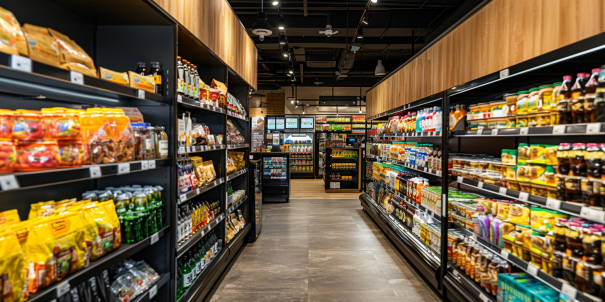In the landscape of retail, staying competitive demands embracing technology solutions that streamline operations, enhance customer experiences, and drive profitability. Retail software solutions have emerged as indispensable tools for businesses of all sizes, revolutionizing how retailers manage their operations, engage with customers, and optimize their strategies. This article delves into the diverse types, myriad benefits, and essential features of retail software, shedding light on how these solutions can pave the path to success in modern retail.
Table of Contents
- Types of Retail Software
- Benefits of Retail Software
- Essential Features for Successful Retail Software Implementations
- Retail Software Trends
- Conclusion
Types of Retail Software
Point of Sale (POS) Systems
At the heart of every retail operation lies the POS system. These software solutions facilitate transactions, manage sales, process payments, and track inventory in real-time. Popular POS systems like Oracle Retail and Shopify POS empower retailers with intuitive interfaces, seamless integrations, and robust reporting capabilities.
Inventory Management Software
Efficient inventory management is critical for maintaining optimal stock levels, reducing costs, and meeting customer demands. Retailers leverage inventory management software like Cleverence, Odoo Inventory and MS Dynamics 365 for Retail to monitor stock levels, track inventory movements, automate replenishment, and forecast demand accurately.
Trusted by thousands of businesses, Cleverence offers a comprehensive suite of tools to streamline inventory tracking, manage multiple warehouse locations, scan barcodes, and tackle complex manufacturing processes — all within one user-friendly platform. With Cleverence, you can maximize the value of your existing system. Cleverence automatically updates your current system, providing invaluable insights into true landed costs, cost of goods sold (COGS), and cash flow impacts as inventory flows in and out of your operational workflows. There’s no need for additional manual work.
Customer Relationship Management (CRM) Software
Building and nurturing strong customer relationships is paramount for retailers seeking sustainable growth. CRM software tailored for the retail sector, such as Zoho CRM and Salesforce Commerce Cloud, centralizes customer data, facilitates personalized interactions, and enables targeted marketing campaigns, driving customer loyalty and retention.
Retail Analytics Tools
In the era of big data, retail analytics tools empower businesses to derive actionable insights from vast volumes of data, enabling informed decision-making and strategic planning. Solutions like SAP Analytics Cloud and Infor Birst deliver powerful analytics capabilities, including sales forecasting, customer segmentation, and performance tracking, to optimize operational efficiency and drive revenue growth.
E-commerce Integration Software
With the exponential rise of e-commerce, integrating online and offline channels is imperative for retailers to deliver seamless omnichannel experiences. E-commerce integration software such as Magento Commerce and SAP Commerce Cloud enables retailers to synchronize inventory, orders, and customer data across multiple channels, fostering customer consistency and convenience.
Mobile Retail Applications
Mobile technology has transformed how consumers shop, allowing retailers to engage customers anytime, anywhere. Mobile retail applications like Sage Mobile Solutions and QuickBooks Commerce empower retailers to offer mobile shopping, mobile payments, and personalized promotions, enhancing convenience and driving sales.
Benefits of Retail Software
- Enhanced Efficiency: Retail software streamlines processes, automates routine tasks, and eliminates manual errors, enabling retailers to operate more efficiently and allocate resources effectively.
- Improved Customer Experience: By leveraging retail software, retailers can deliver personalized experiences, anticipate customer needs, and provide seamless interactions across channels, fostering customer satisfaction and loyalty.
- Better Inventory Management: With real-time visibility into inventory levels and automated replenishment processes, retailers can minimize stockouts, reduce excess inventory, and optimize stock turnover, leading to improved profitability and customer satisfaction.
- Data-Driven Insights: Retail software empowers retailers with actionable insights derived from data analysis, enabling informed decision-making, targeted marketing efforts, and strategic planning to drive business growth and profitability.
- Omnichannel Integration: By integrating online and offline channels seamlessly, retailers can offer customers a unified shopping experience, allowing them to browse, purchase, and return products across channels, enhancing convenience and satisfaction.
- Increased Sales and Revenue: With enhanced operational efficiency, personalized marketing efforts, and seamless customer experiences, retailers can drive sales, increase average order value, and maximize revenue potential.
Essential Features for Successful Retail Software Implementations
- User-Friendly Interface: Intuitive interfaces and easy navigation are essential for ensuring user adoption and minimizing training requirements, enabling retailers to maximize the benefits of their software investments.
- Scalability and Flexibility: Retail software should be scalable and adaptable to accommodate business growth, changing market dynamics, and evolving customer needs, ensuring long-term viability and relevance.
- Integration Capabilities: Seamless integration with existing systems, third-party applications, and external data sources is crucial for ensuring data consistency, operational efficiency, and holistic insights across the organization.
- Customization Options: Retail software should offer customization options to align with unique business processes, preferences, and industry-specific requirements, enabling retailers to tailor the software to their specific needs and workflows.
- Data Security and Compliance: Robust security features, encryption protocols, and compliance certifications are imperative for safeguarding sensitive customer data, protecting against cyber threats, and ensuring regulatory compliance.
- Cloud-Based Infrastructure: Cloud-based retail solutions offer scalability, accessibility, and cost-effectiveness, enabling retailers to leverage the power of the cloud for seamless updates, remote access, and enhanced collaboration.
- Mobile Compatibility: In an increasingly mobile-centric world, retail software should be compatible with mobile devices, enabling retailers to access critical data, perform transactions, and engage with customers on the go.
Retail Software Trends
- AI and Machine Learning: AI-powered algorithms and machine learning capabilities are revolutionizing retail software, enabling retailers to personalize recommendations, optimize pricing, and forecast demand with unprecedented accuracy.
- Augmented Reality (AR) and Virtual Reality (VR): AR and VR technologies are reshaping the retail landscape, offering immersive shopping experiences, virtual try-on solutions, and interactive product demonstrations to enhance customer engagement and drive sales.
- Blockchain Technology: Blockchain technology promises to enhance transparency, traceability, and security in retail supply chains, enabling retailers to track product provenance, prevent counterfeiting, and streamline transactions with enhanced trust and integrity.
- Voice Commerce: Voice-enabled shopping experiences powered by virtual assistants like Amazon Alexa and Google Assistant are gaining traction, enabling consumers to make purchases, reorder products, and access personalized recommendations using voice commands.
- Contactless Payments: The COVID-19 pandemic has accelerated the adoption of contactless payment technologies, such as NFC and mobile wallets, offering customers a safer, more hygienic payment option and driving the shift towards cashless transactions.
Conclusion
In conclusion, retail software solutions offer myriad benefits for businesses seeking to enhance efficiency, improve customer experiences, and drive profitability in today’s competitive retail landscape. By leveraging the right combination of software tools, retailers can optimize their operations, unlock valuable insights, and stay ahead of the curve amidst evolving consumer preferences and technological advancements. Whether it’s enhancing inventory management, harnessing the power of data analytics, or embracing emerging technologies like AI and AR, investing in retail software is essential for thriving in the digital age of retail.
Infor Birst, Oracle Retail, and QuickBooks Commerce are just a few examples of leading ERP systems that empower retailers with comprehensive solutions for efficient retail operations, seamless omnichannel experiences, and robust data management capabilities. With the right retail software in place, businesses can navigate the complexities of the modern retail landscape with confidence, agility, and innovation.
Read Dive is a leading technology blog focusing on different domains like Blockchain, AI, Chatbot, Fintech, Health Tech, Software Development and Testing. For guest blogging, please feel free to contact at readdive@gmail.com.





